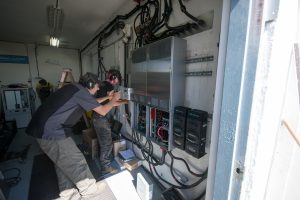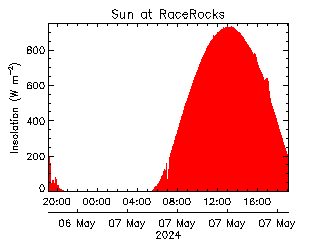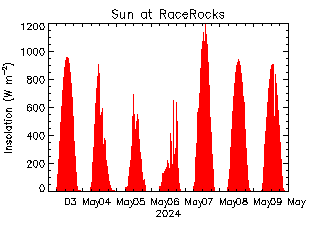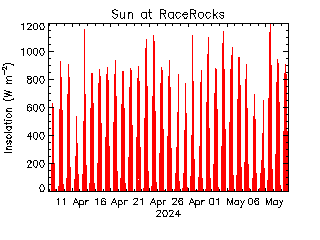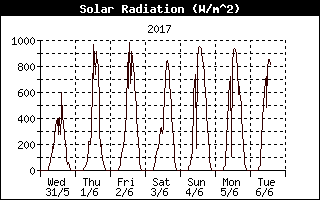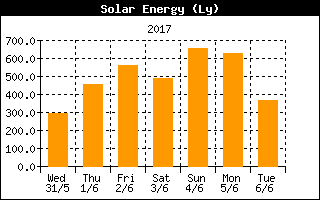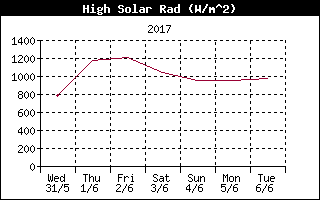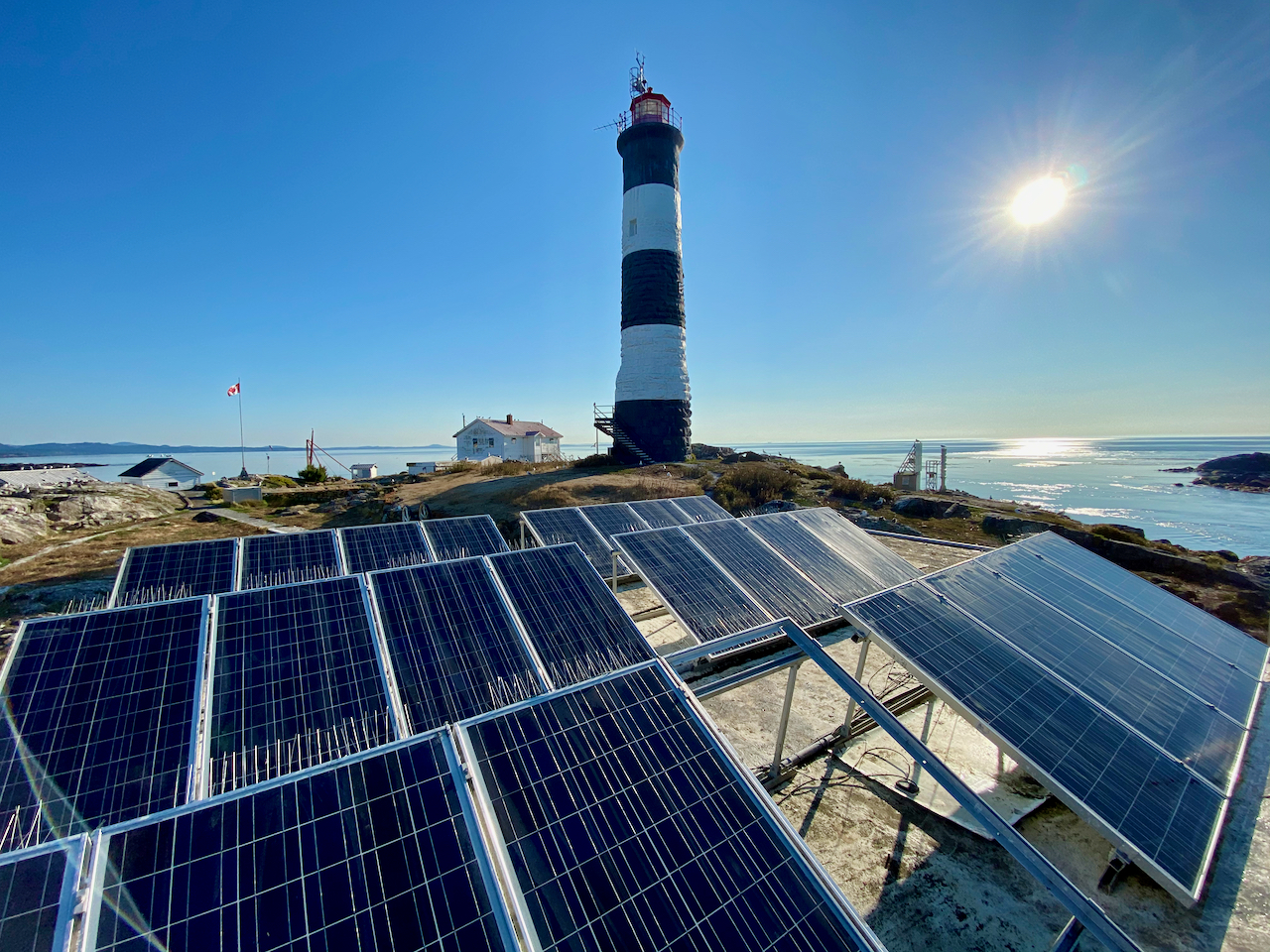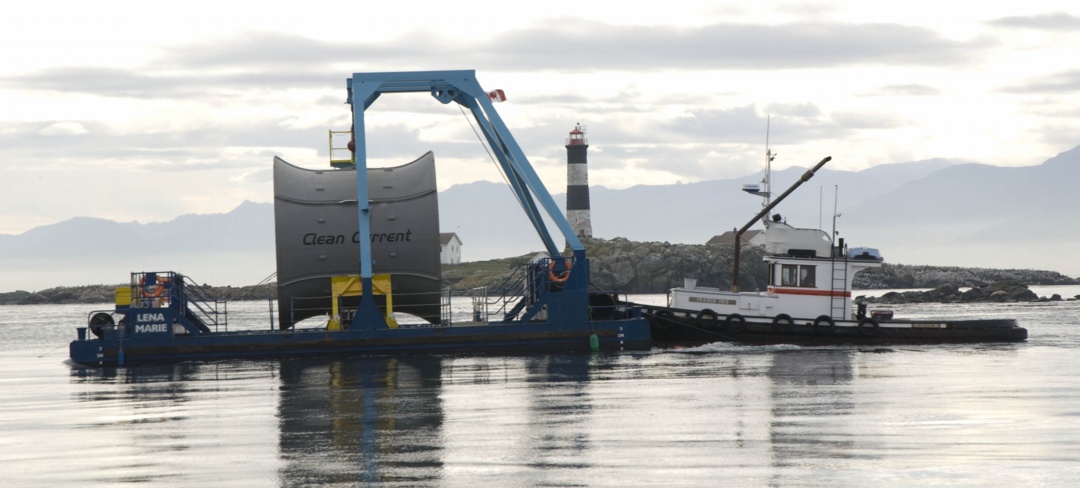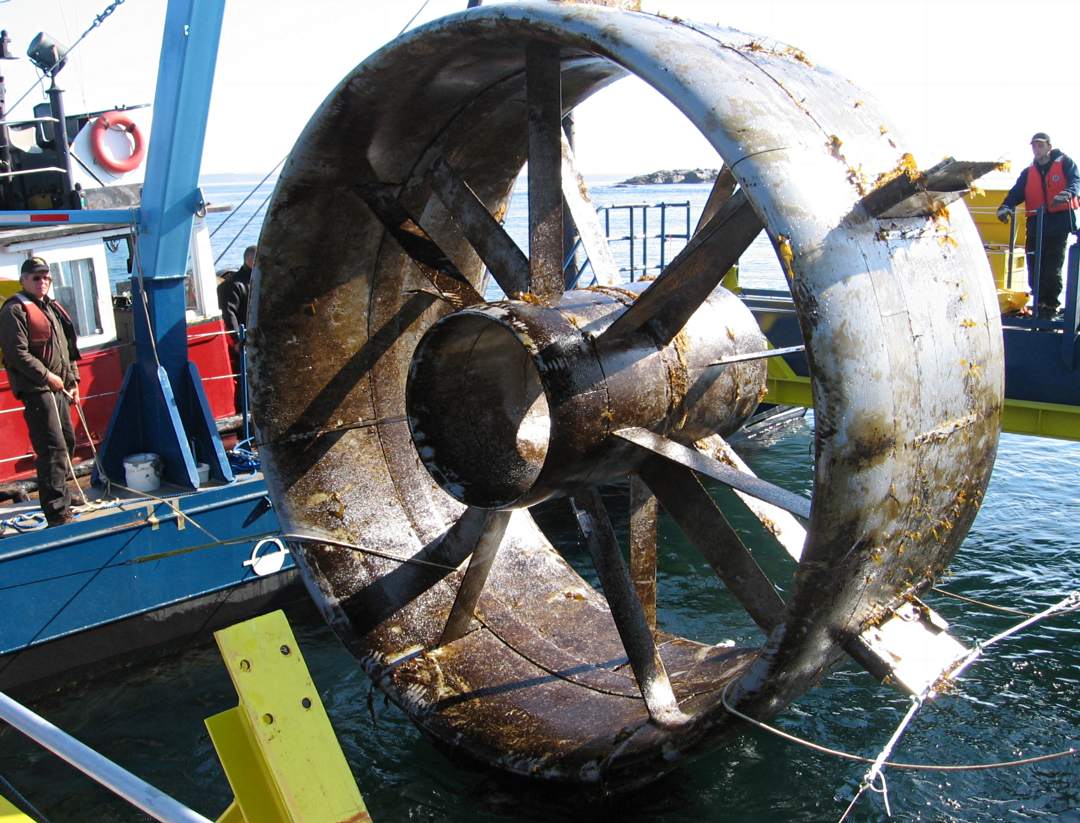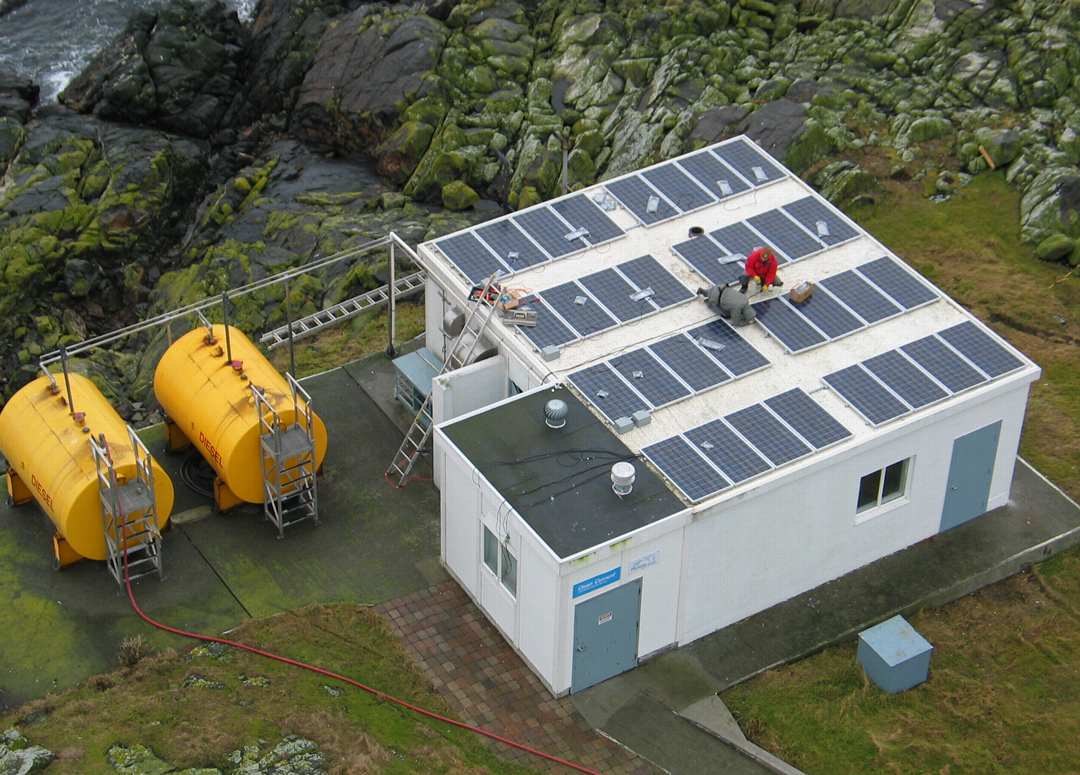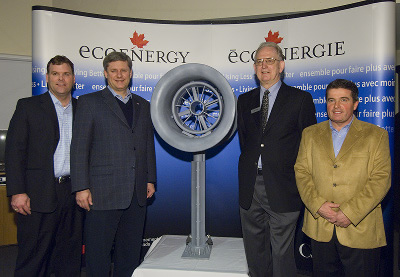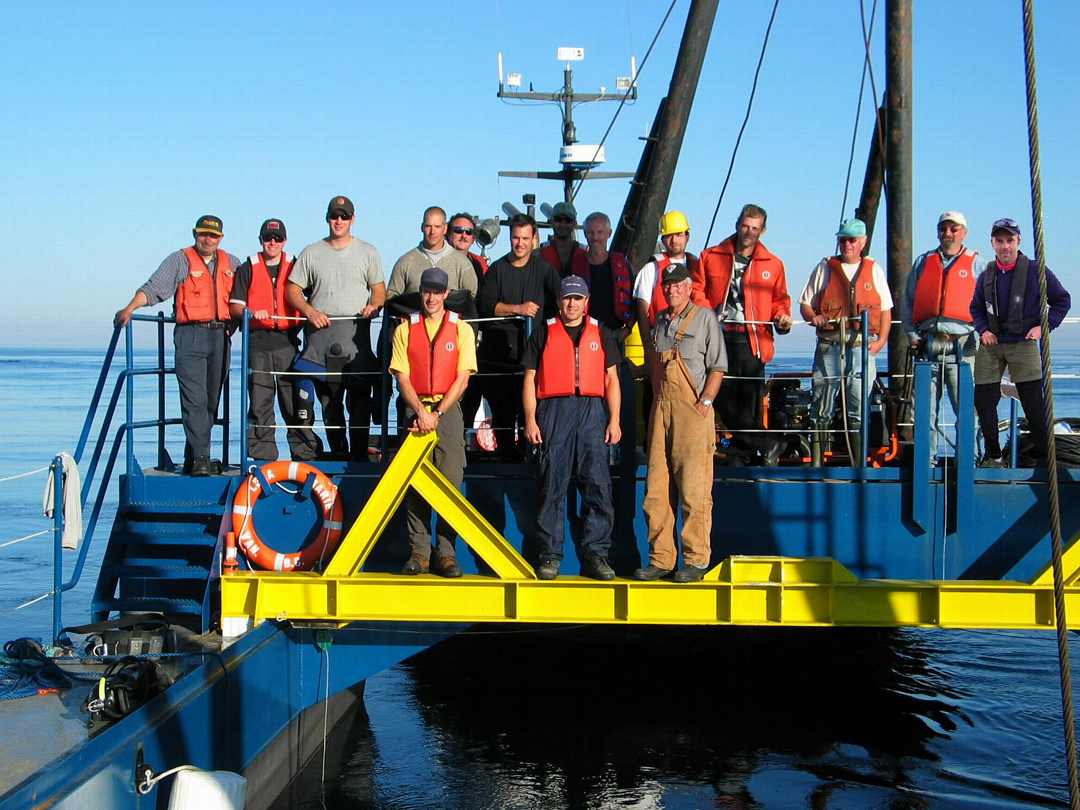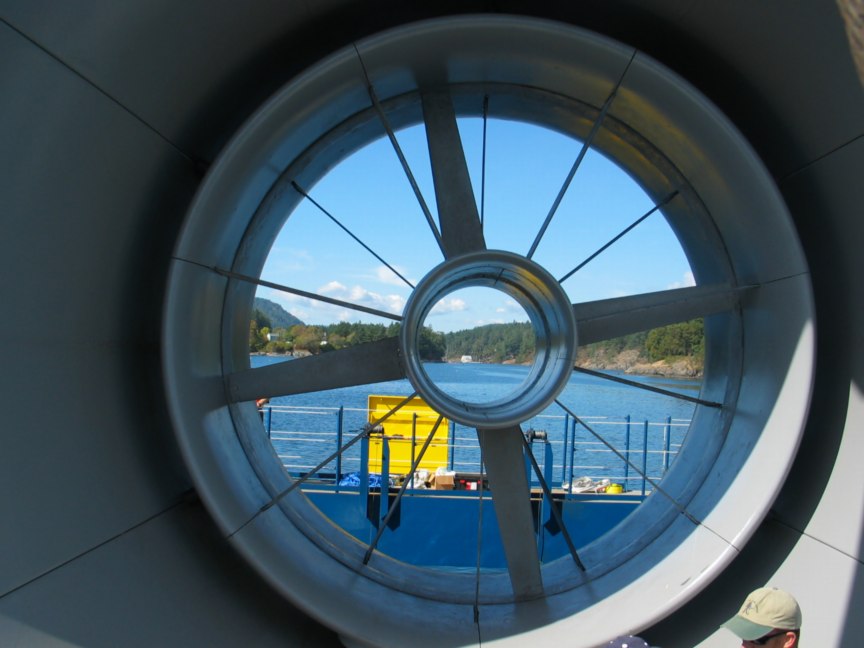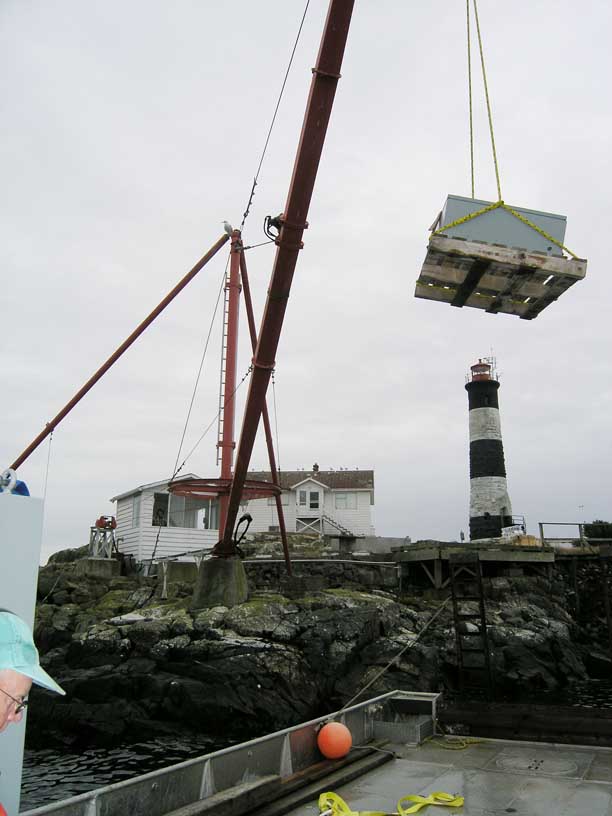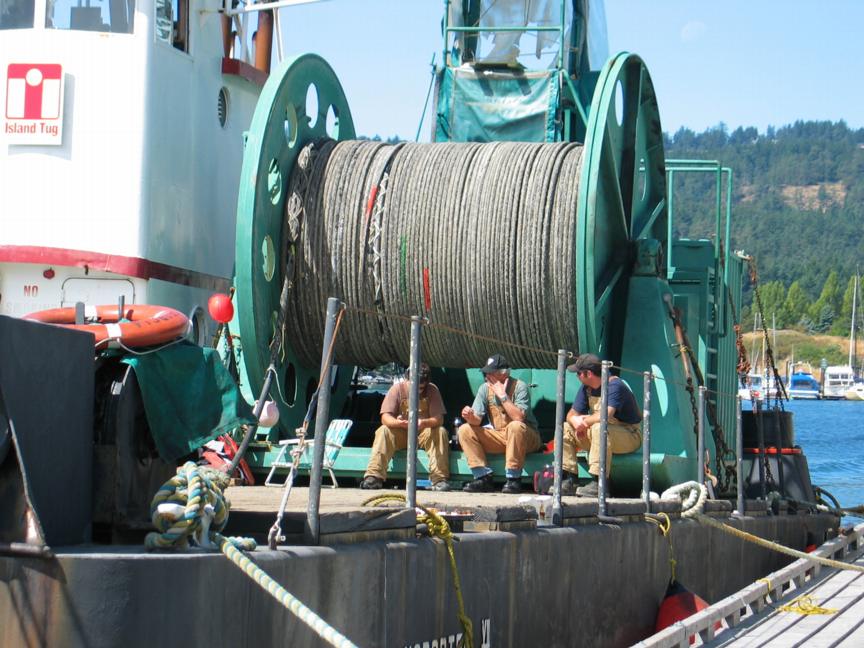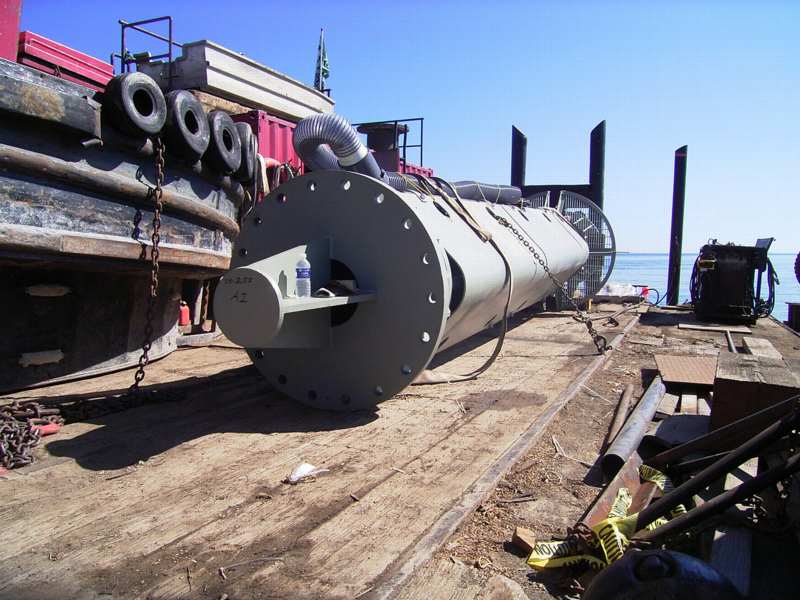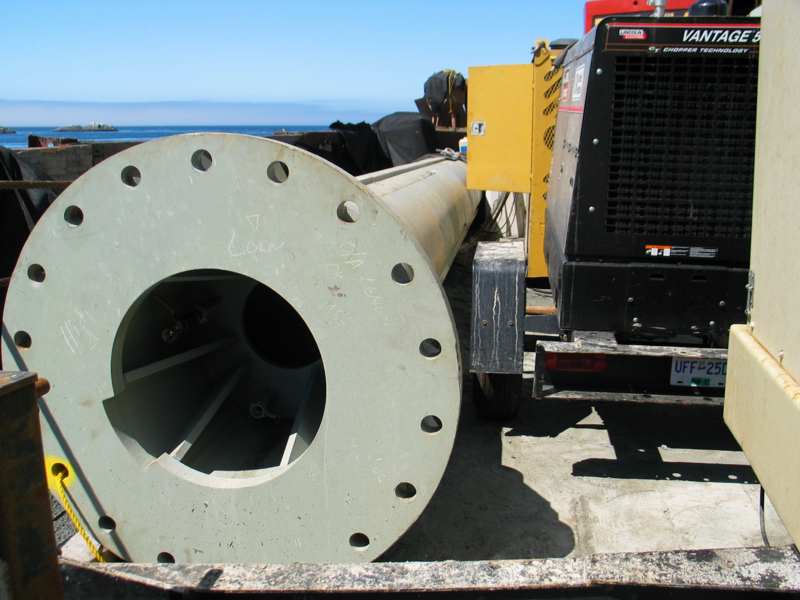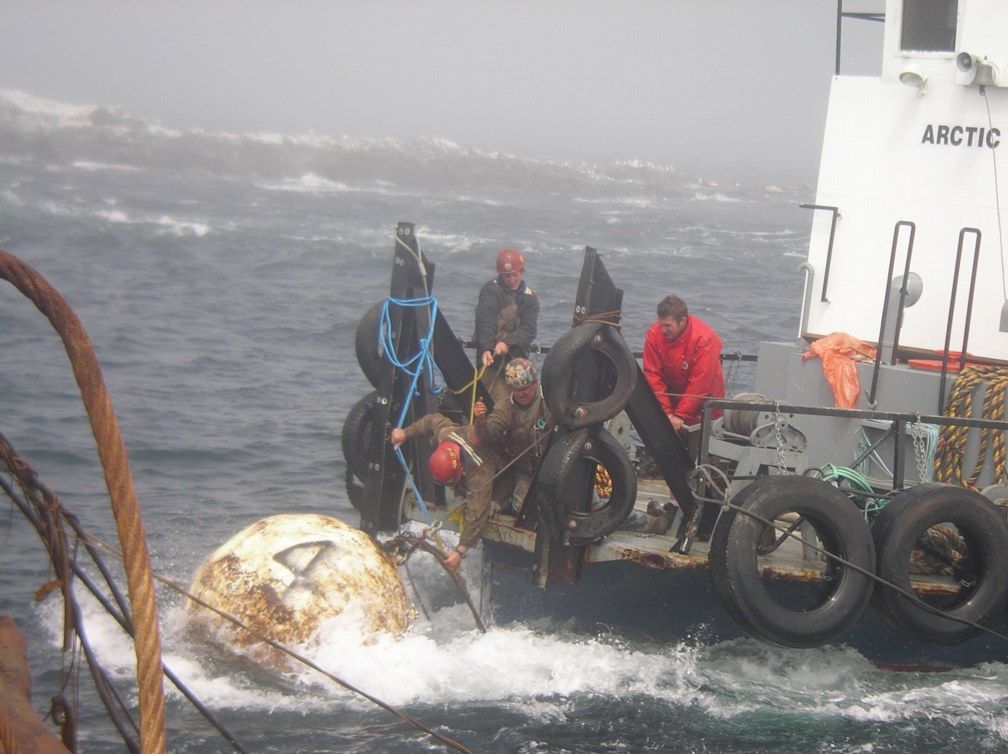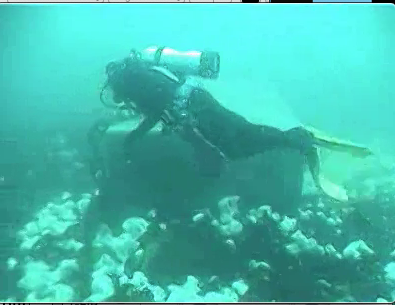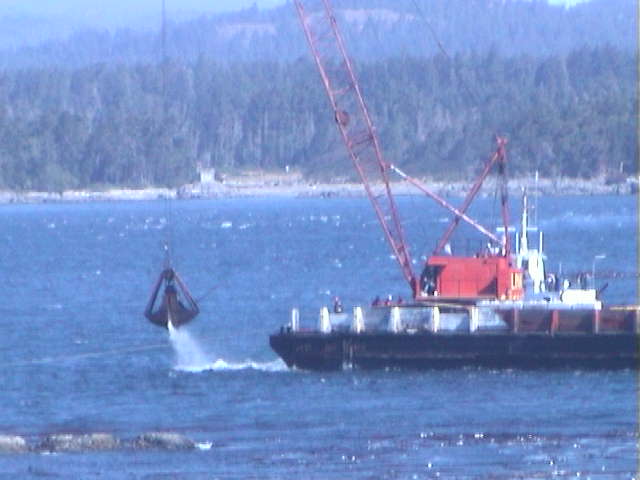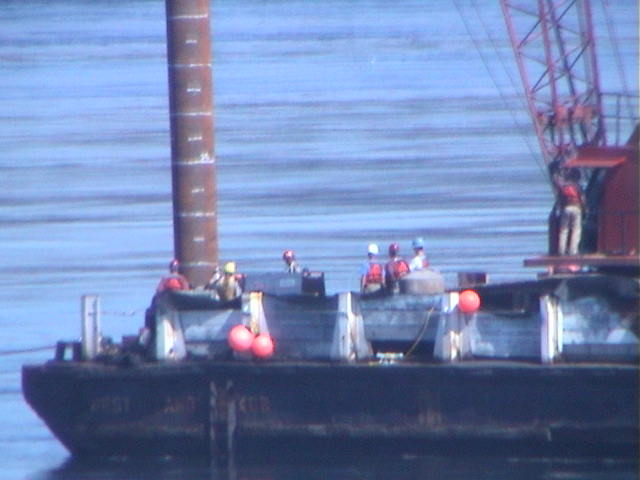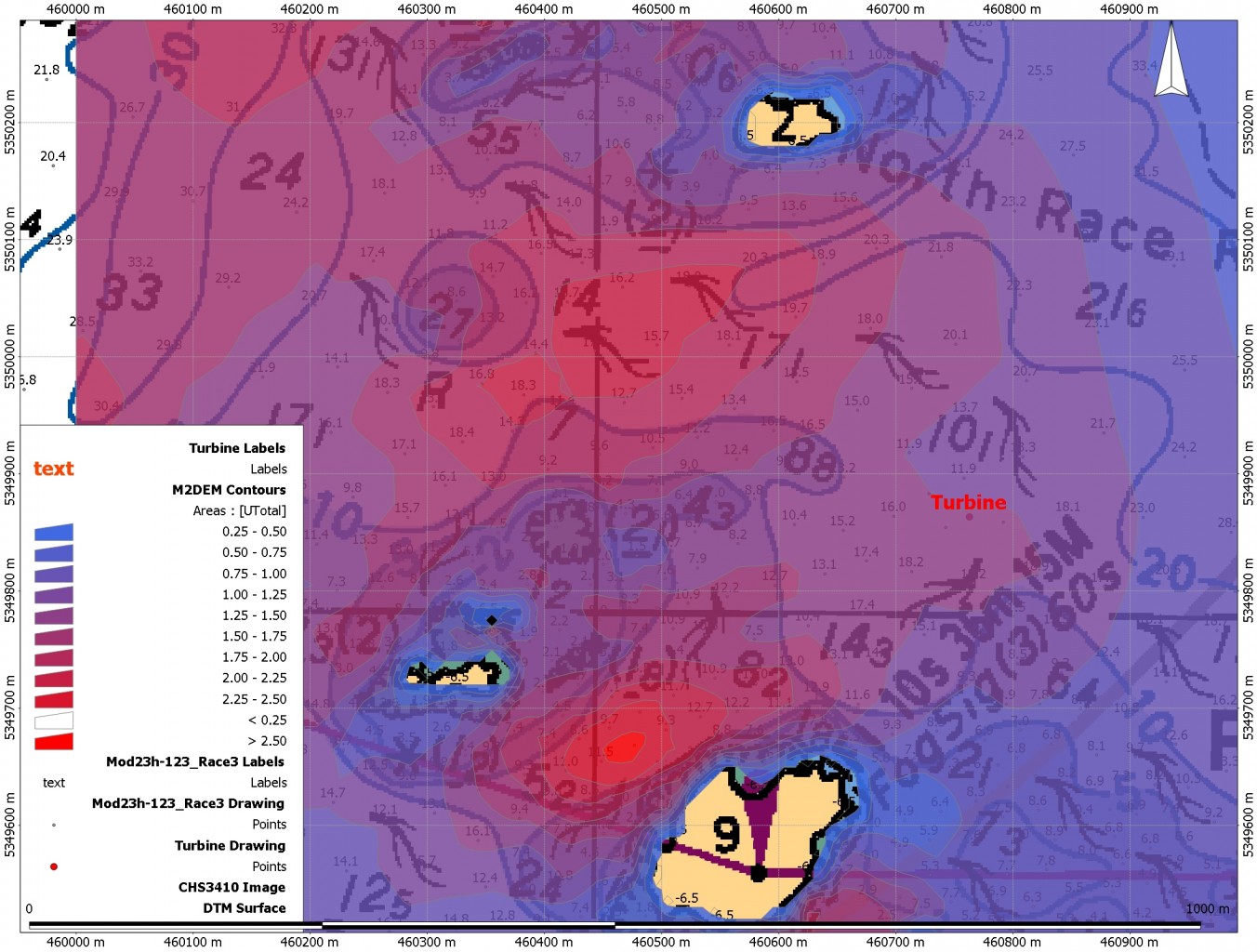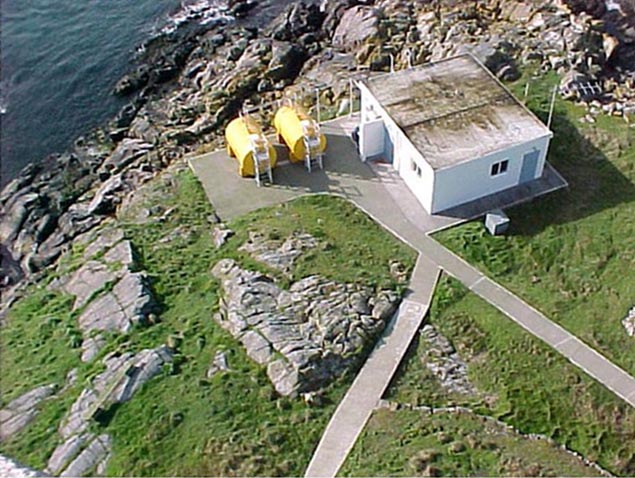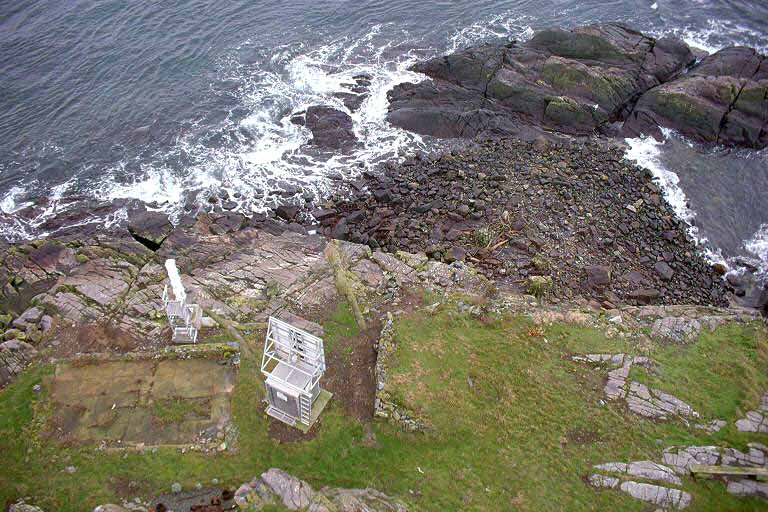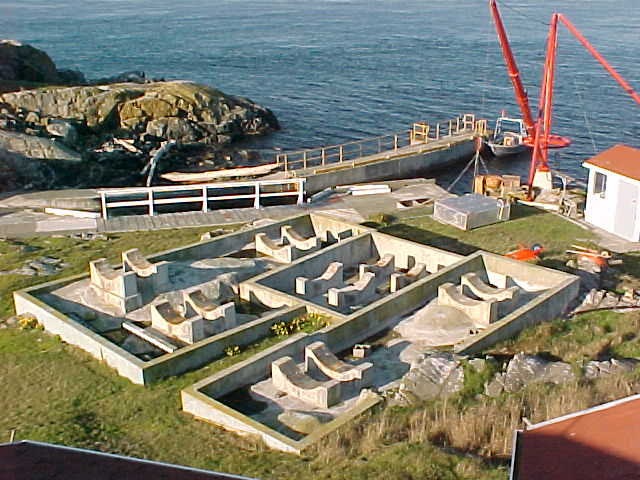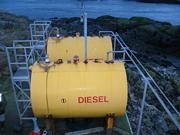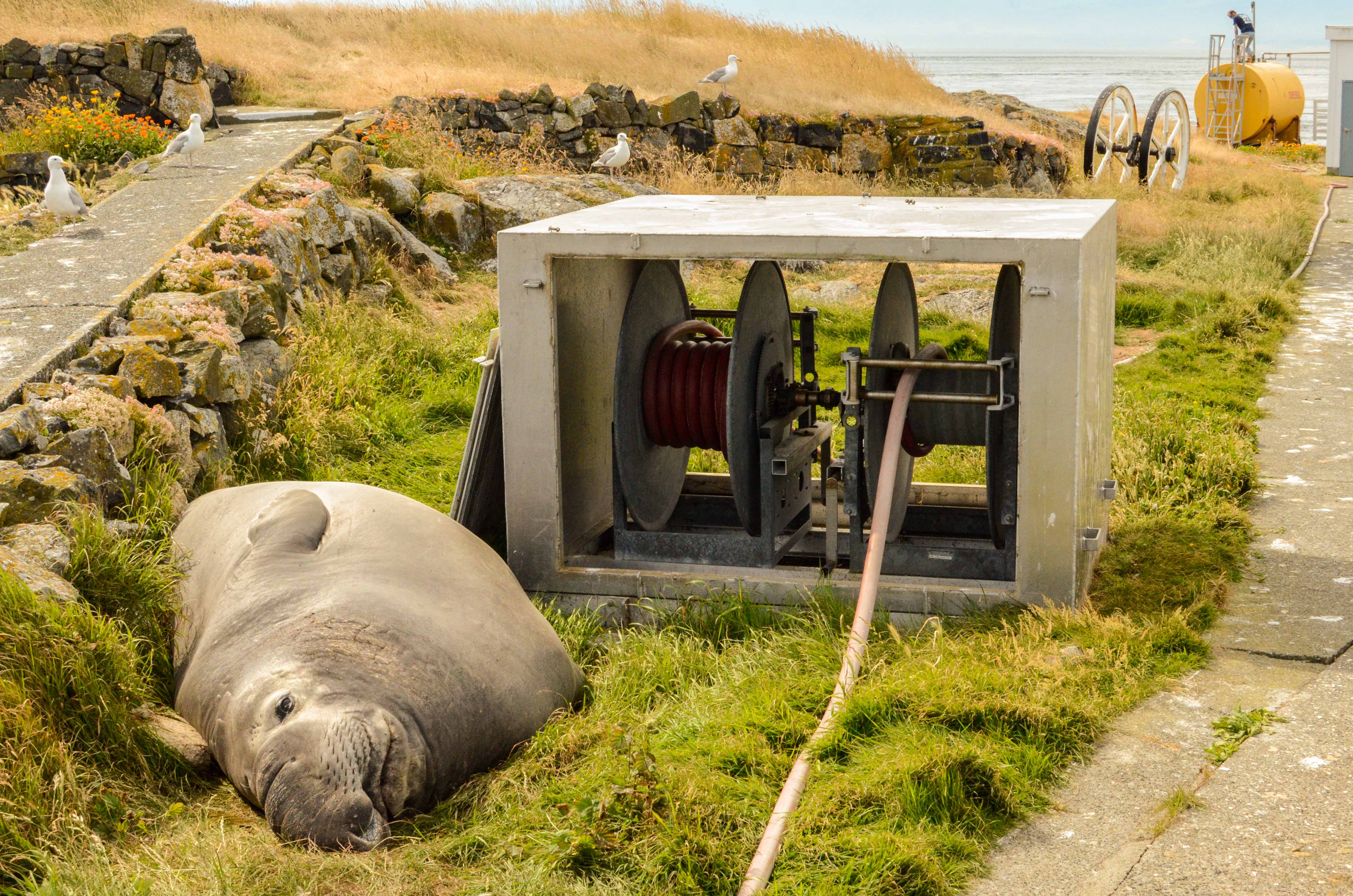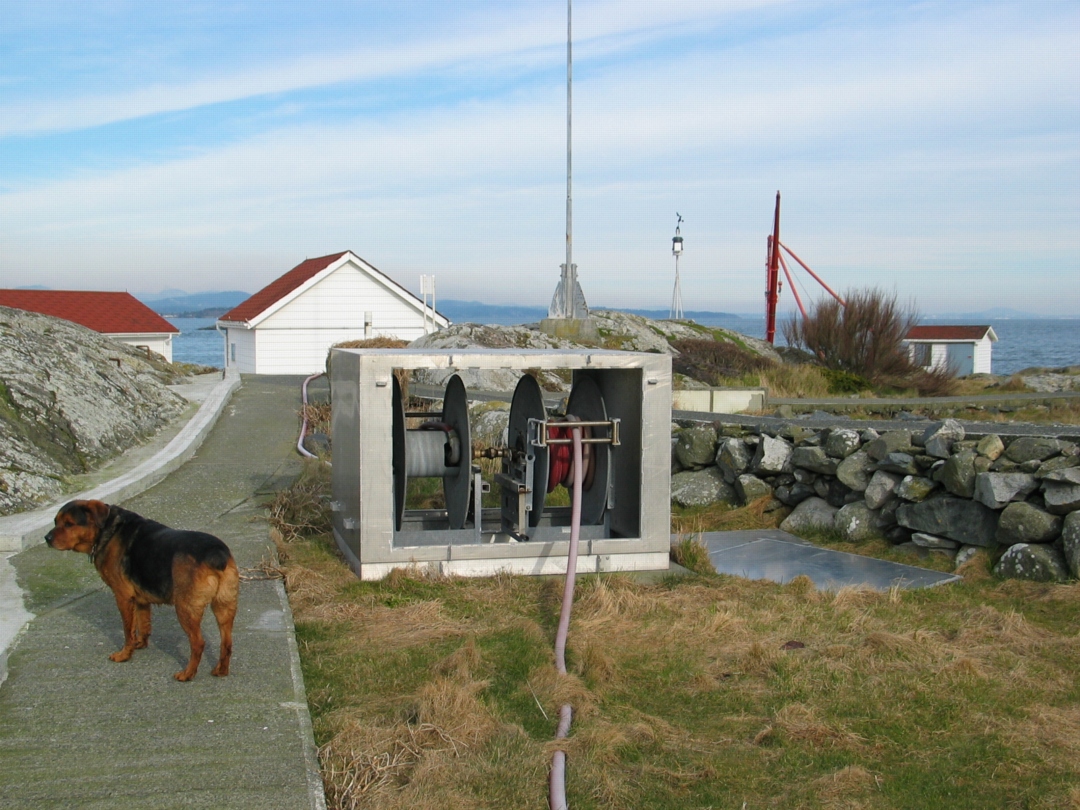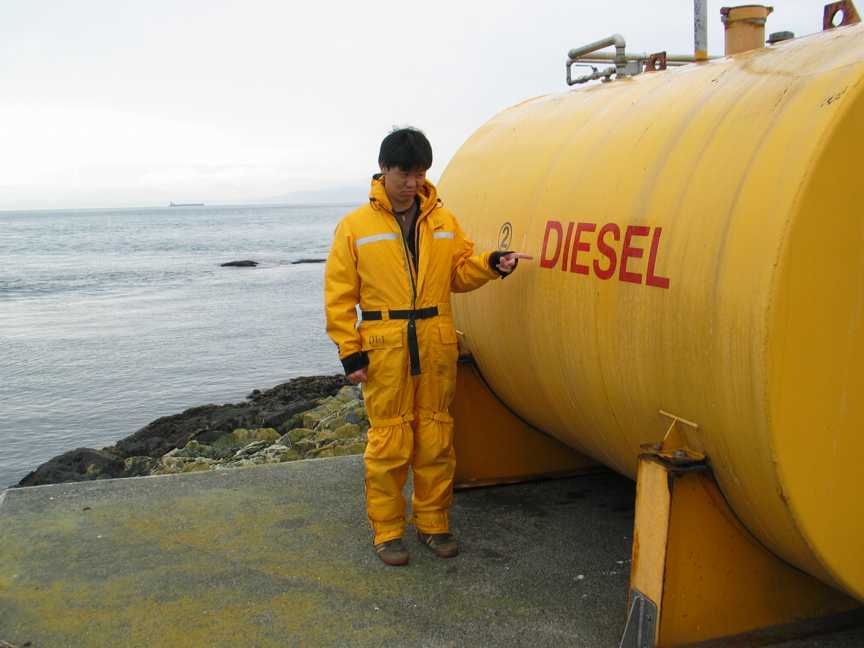Some preliminary comments contributed by:
Norm Healy , Environmental Officer, Lightstation Rejuvenation Project
DFO – Canada Coast Guard, Victoria, B.C. 250-480-2723– 2001
The primary reason for investing in alternate, or renewable, energy systems is to reduce environmental impacts.
The negative impacts of existing systems could be summarized as follows:
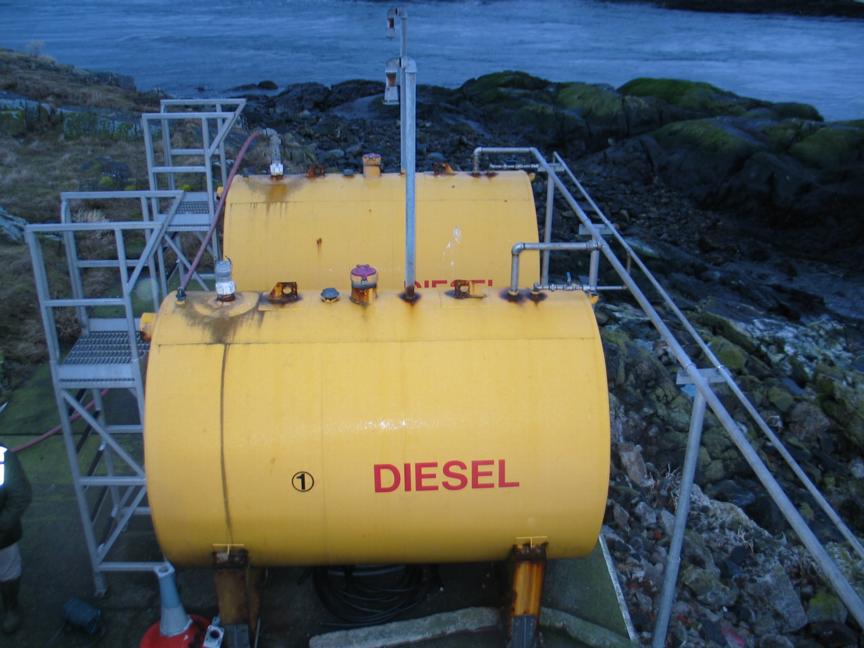 1) On-site diesel storage represents a significant risk.
1) On-site diesel storage represents a significant risk.
Historically, these type of storage systems in harsh marine environments have been subject to frequent failure resulting in releases to the environment. The smaller domestic tanks have been as much of a problem as the larger bulk storage for generator engines. The capacity to respond to releases is limited because of the remote location of the lightstation.
2) CO2 emissions:
- Assuming 50,000L/year marine grade diesel combustion (rough average requirement for CCG lightstations) the diesel system contributes about 133,500 kg/year CO2 emissions (Carbon coefficient for distillate fuel (fuel oil): 161.44 pounds of CO2 per million BTU, or 22.29 pounds per gallon, or 2.67 kg/L. (U.S. Environmental Protection Agency, 1999. U.S. Inventory of Greenhouse Gas Emissions and Sinks: 1990-1997.))
- This, of course does not include the emissions associated with, extraction, refinement, and transportation of diesel to the point of consumption. The average US household CO2 emissions for oil heat and electrical is approximately 15,000 kg/year.
3) Diesel exhaust typically includes nitrogen oxides (NOx), volatile organic compounds (VOCs). (NOx and VOCs are ground level ozone pre-cursors, ground level ozone is phytotoxic), sulphur oxides (SOx), polycyclic aromatic hydrocarbons (PAHs), particulate matter (including pm 2.5), and dioxins and furans. The local effects of these emissions are unknown.
Impacts of proposed systems:
A more thorough evaluation is required here. For instance it may be concluded that a tidal energy system would likely have the least environmental impact due to smaller systems required. However caution is advised here. Just because the tidal system requires less physical space, does not mean that it will have the least impact. Potential impacts are determined by both the characteristics of the stressor (including size, but also magnitude, frequency, duration, timing, etc.) and the characteristics of the receiving environment (i.e. sensitivity of species present, habitat quality, etc.).

